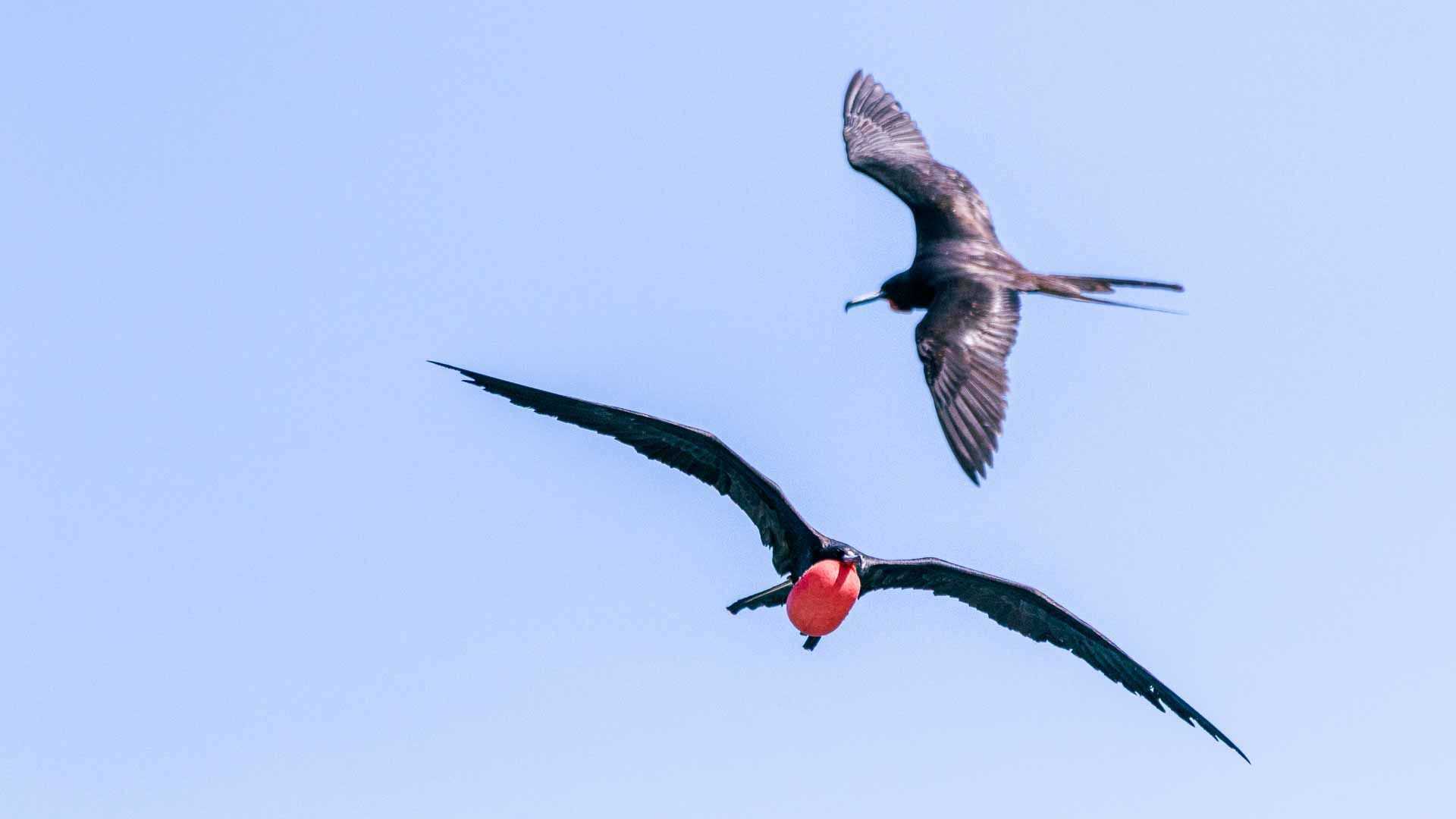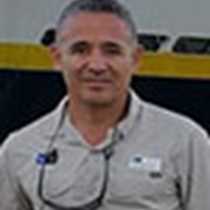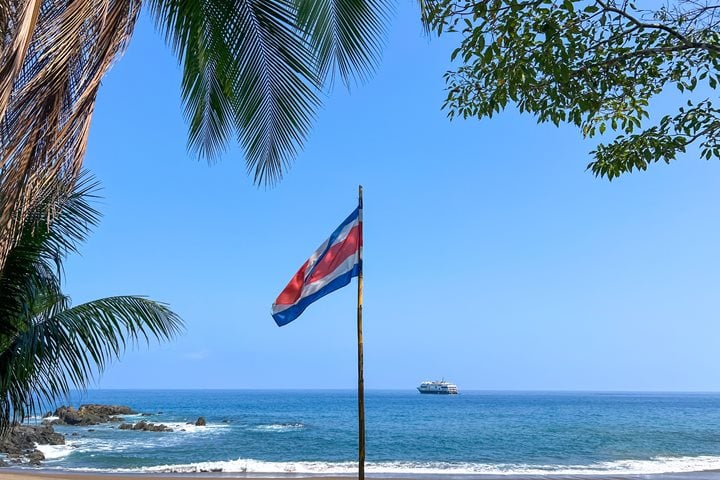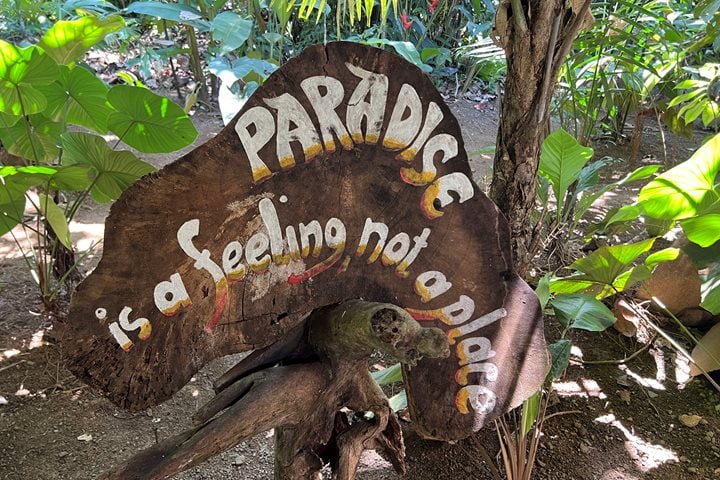Around 20,000 years ago, the Gulf of Panama was flatlands with emergent mountains; Iguana Island was one of them. As the ocean level increased near the end of the last Ice Age, the island was flooded. An exposed remnant formed the place we visited today. We left the Panama Canal after midnight. Once we finished breakfast, we sailed west and reached Iguana Island, our destination of the day.
A relaxing navigation allowed us to discover the dunes along the coast of Peninsula de Azuero. Upon arrival to the island, we led hikers and photographers on an exploration. We shared interpretations of the flora and fauna of the refuge and natural history facts to help everyone appreciate what nature provides. A beautiful Panama tree (Sterculia apetala) offered us the chance to explain the characteristics of the country’s national tree. Hermit crabs, black ctenosaura iguanas and golden orb weaving spiders welcomed us right from the start. The spider web of this Nephila has a protein that provides it with high performance mechanical properties. The same properties are used to make bulletproof vests.
As we crossed to the opposite side of the island, a large population of magnificent frigatebirds performed their courtship ritual. Males inflated their gular pouches and began to make a drumming sound through the friction of their bills against the pouches.
We arrived to the other beach where a spectacular deposit of columnar black lava rose, proving the volcanic origin of the island. At some point, Iguana Island was connected to Peninsula de Azuero. The island was mostly submerged by rising water levels at the end of the last Ice Age. Today, the island hosts 17 of the 32 species of coral reef in Panama. After the hike, our guests went for a swim in the turquoise waters or explored the white sand beach that originated from the reefs. Hawksbill turtles (Eretmochelys imbricata), guineafowl pufferfish (Arothron meleagris), bicolor parrotfish (Cetoscarus bicolor) and more showed up for the snorkelers.
We returned to National Geographic Quest, where we continued to see pantropical spotted dolphins riding the bow for a while. We met at 6:00 p.m. for cocktails and enjoyed listening to recaps by our staff of naturalists. One more beautiful day in Panama!






